I still remember the first time I smelled an attar. It was a muggy summer afternoon in an Old Delhi bazaar when a sudden breeze carried the warm, rich aroma of sandalwood and rose. A friendly shopkeeper caught my curious glance and invited me to try a drop of his specialty rose attar. I dabbed it on my wrist—and in that moment, I was captivated. The scent was deep, pure, and unlike anything I had ever experienced.
That’s when I began to wonder: What is attar, really? As I soon discovered, attar (also spelled ittar) is a traditional, alcohol-free perfume oil made from natural botanicals. It’s a highly concentrated essential oil, often distilled into a sandalwood base and aged for weeks—or even years—to develop its full character. No synthetic fillers. No harsh alcohol. Just nature, bottled.
After researching attars, I learned they’re basically “the pure, undiluted form of perfume,” as a fragrance expert puts it. Attars are made by steam or hydrodistilling flowers, herbs, spices, or woods into a fixative like sandalwood oil. This process captures the fragrance essence of the plant. The result is a super-concentrated perfume oil: just a drop or two on a pulse point (like your wrist or behind your ear) can last for hours. Unlike a spray cologne, attars aren’t diluted in alcohol – they’re 100% scented oil. Because of this, you’ll find attars sold in small glass flacons or roll-on bottles (often with a tiny stick applicator) rather than atomizers.
Attars often have names of their main ingredients – think Rose Attar, Sandalwood Attar, Oudh (Agarwood) Attar – which hint at their scent profiles. And because they’re alcohol-free, attars are much gentler on the skin and can even be used during religious ceremonies or aromatherapy, not just as a daily fragrance. Learning all this made me appreciate why attar was sometimes called “liquid gold.”

Table of Contents
History and Cultural Significance
Attar isn’t just a pretty perfume – it has a rich history. The very word “attar” comes from the Persian/Arabic word itr, meaning “perfume”. In fact, Persian physician Ibn Sina (known as Avicenna) was one of the first to distill flowers into aromatic oils during the Middle Ages. Ancient Egyptians were also famous for their fragrant oils (Egyptians even developed perfumes long before any European tradition). When you look into what is attar, you uncover a legacy that spans centuries — as the art of attar-making spread across the Islamic world and into India, it became a deeply rooted cultural and spiritual practice.
In India, Kannauj (near the Ganges) became legendary for attars. Long before Grasse in France became known for perfume, Kannauj’s craftsmen were distilling scents (the local term is deg-bhapka method with copper stills). Mughal royalty adored these fragrances: Emperor Jahangir and his queen Noor Jahan were early patrons of Kannauj attars, and folklore says Noor Jahan famously fell in love with its rose attar. Even the Mughal Emperor Akbar reportedly loved fragrant oils, dabbing himself with attar every day. To this day, Kannauj is called India’s “perfume capital” – tiny glass bottles and aged camel-skin gourds of attar line its bazaar lanes, filling the air with rose, jasmine, sandalwood and more.
Attar also has deep cultural and spiritual roots. In Indian Ayurveda and temple rituals, certain scents (like saffron, sandalwood, or mitti – the smell of rain-soaked earth) are valued for their calming and pious qualities. Likewise, attars play a big role in Middle Eastern and Muslim traditions. Many men I met would carry a vial of attar to apply before Friday prayers or Eid, as a sign of hospitality and cleanliness.
When you begin to understand what is attar, you see it’s more than just a fragrance – it’s a living tradition. Today, attar is often the fragrance of choice in South Asian and Arab cultures – used in homes, weddings, religious ceremonies, and even in perfumed hair oils and skincare rituals. Learning these traditions, I felt a personal connection; wearing attar suddenly felt like wearing centuries of culture on my skin.
Indian vs Middle Eastern Attars
Different regions have their signature attar styles. In general, Indian ittars and Middle Eastern perfume oils share the idea of rich, long-lasting scents, but they use different ingredients and notes. Here are some broad contrasts:
- Ingredients and Scent Profile: Indian attars often use a sandalwood oil base, into which floral and herbal scents are distilled. Common notes include rose, jasmine, saffron, cardamom, patchouli, vetiver and vetiver, and giving earthy, floral, and traditional aromas. For example, a classic “Rose Attar” is usually rose petals infused in sandalwood oil. Middle Eastern attars (often called mukhallat when blended) lean heavily on oudh (agarwood), amber, frankincense, musk, and exotic spices. The overall feel is richer and more opulent – think smoky oud, sweet amber resin, and spicy saffron. Some top notes might include warm citrus or dried fruits in Arabic perfumes, whereas Indian ittars may open with greener or herbal hints.
You May Also Like
- 10 Expert-Backed Hacks to Make Your Perfume Last All Day- Even in 40°C Heat !
- 10 Hidden Gems: Best Perfumes Under ₹500 That Smell Expensive & Last All Day- Every Indian Should Try !
- 10 Irresistible Scents: Best Perfume to Attract Women & Drive Them Wild!
- Usage and Tradition: In India, attars are traditionally used in Ayurvedic and spiritual contexts, as well as daily. For example, people might use a calming “Chandan (sandalwood) Attar” during meditation or temple rituals. In the Middle East, perfumes (oil and spray) are essential to hospitality and personal grooming. It’s common to layer fragrances – starting with an oil-based attar and finishing with a spray or incense to create a complex “brew” of scent. When exploring what is attar, you’ll notice cultural nuances: Indian attars feel earthy and rooted (imagine walking in a garden after rain). In contrast, Middle Eastern blends often feel bold and luxurious (imagine a rich leather chair in a desert palace).

Neither is “better” – it depends on personal taste. I lean towards the earthiness of Indian rose and vetiver attars, but I also love a smoky Frankincense/Oud blend from the Gulf as an evening scent. Both traditions have amazing diversity. Ultimately, whether you prefer a sweet floral rose attar or a deep amber oud, exploring attars is about embracing different cultural stories through fragrance.
Notable and Trustworthy Attar Brands
If you’re ready to buy attar (and I highly recommend trying it!), it helps to know which brands are respected. Luckily, many artisanal perfumers and modern companies are making great attar oils. Here are some names I came across (both budget-friendly and premium):
- Indra Sugandh Bhandar (India): A vintage workshop in Delhi since 1958, famous for pure essential oils and classic fragrances. They insist on no alcohol and often emphasize “skin-friendly” ingredients. Their rolls of Gulab (rose), White Chandan (sandalwood) and Kesar Chandan (saffron+sandal) are well-loved.
- Parag Fragrances (India): A large perfumery group (since 1974) with an enormous range – they claim 500+ scents, from Rose and Khus to exotic combos. Parag uses organic components and traditional bhapka distillation. Their attars are famous for being truly natural (and great for religious use). They even produce attars in huge 1-liter bottles!
- Kastoor (India): A hip Delhi-based brand blending modern and traditional. Kastoor’s rolls combine notes like white oud, Himalayan cedar, and rain-soil mitti. The founder Kabir Das’s poem inspires their name. Kastoor’s bottles are sleek, yet they’re alcohol-free, using classic roll-on sticks. They’re on the pricier side (₹2,000+), but very high quality.
- Ambrosial Fragrances (India): A wonderful artisanal house (based in Hyderabad) with alcohol-free, roll-on attars at decent prices (starting ₹150). They blend premium materials – for example, a Cambodian oud with Indonesian patchouli and sandalwood – to create complex Indian-Middle mixes. Ambrosial’s packaging is cute (sometimes wooden boxes) and travelers love their tiny glass bottles.
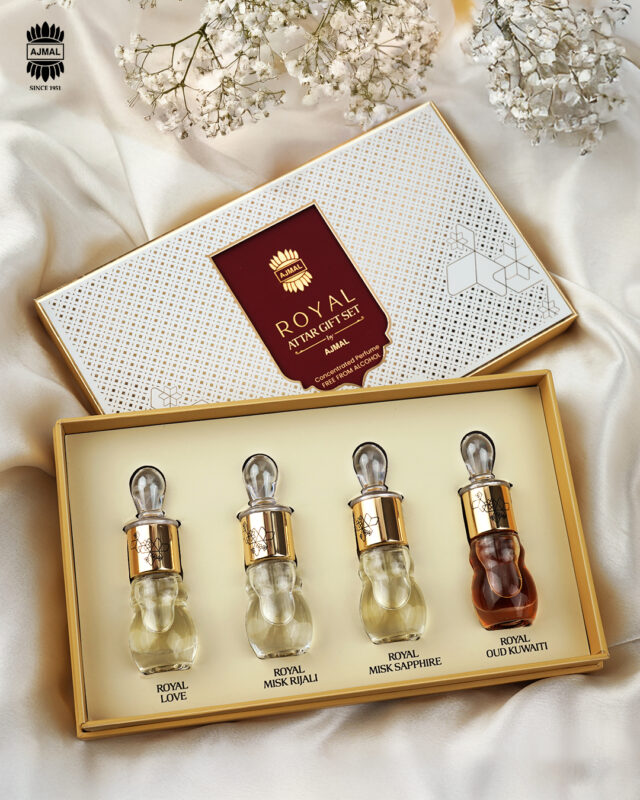
- Ajmal Perfumes (UAE/India): A global brand (over 7 decades old) from the Gulf. Ajmal offers everything from body mists to concentrated attar oils. They have a huge catalog (100+ fragrance options) and elegant packaging. Ajmal attars often come in roll-on bottles and are affordably priced (around ₹299 to ₹6600), making them accessible premium options.
- Oud Arabia (UAE): A Dubai-based luxury label. You’ll find their boutiques in malls with an intense scent drifting out! Oud Arabia sources top-quality ingredients from around the world – Grasse roses, Pacific ambergris, oud from Vietnam/Indonesia, etc. They’re 100% oil-based (no alcohol) and their attars can last up to 48 hours on skin. Definitely a premium pick if you want exotic, long-lasting blends.
Read More: 10 Proven Hacks to Make Your Perfume Last All Day in the Indian Heat !
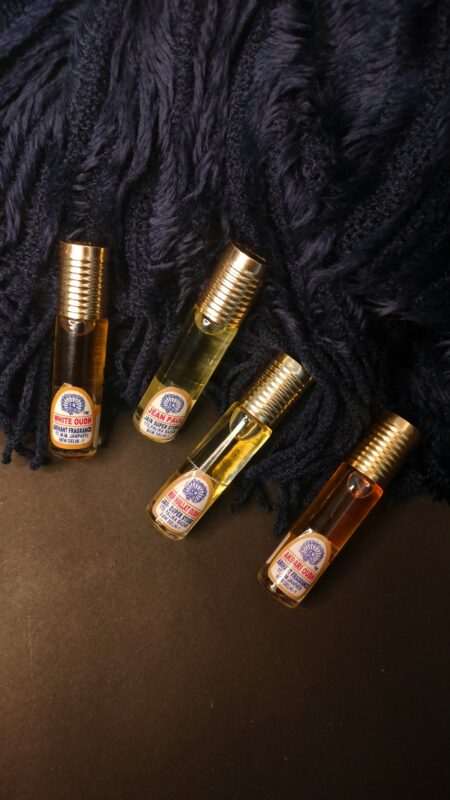
- Adil Qadri (India/UAE): A niche craft brand (Lucknow-based, founded 2002). They use rare stuff like guaiac wood and nutmeg oil. Adil Qadri attars are often unisex and come in beautiful roll-on bottles. Each scent is categorized (floral, spicy, musky, etc.) for easy browsing. These are on the luxury end.
- Others: I also saw mentions of Parag’s sister brand Ruh and Ratlam’s Arochem (very budget-friendly, common in India), as well as Middle Eastern names like Rasasi, Swiss Arabian, Al Haramain, Surrati, etc. These brands often sell attar oils (sometimes under the term “concentrated perfume oil”). The key is to stick to reputable sellers or shops (for example, well-reviewed online stores, artisan markets, or specialized fragrance shops). In general, look for skincare-safe ingredients and an alcohol-free formula when choosing attars.
Each brand has its unique flair, and I encourage you to sample small sizes or ask for recommendations. Attars are so personal – I tend to gravitate toward sandalwood-vanilla mixes, while my friend loves spicy saffron oud. But across the board, these brands have earned trust for quality.
Modern Usage Tips
Using attar is a bit different from using a spray perfume. Here are some practical tips I’ve picked up:
- Application: Since attars are oil, you simply dab (don’t rub) a small dot on warm pulse points – wrists, the base of the neck, behind the ears, or even on the chest. These areas have warmth and blood flow, which help diffuse the scent. Because attars are super concentrated, a tiny drop goes a long way (usually 1-2 drops total). Don’t overflow! If too much is applied, it can feel overwhelming, so err on the light side.
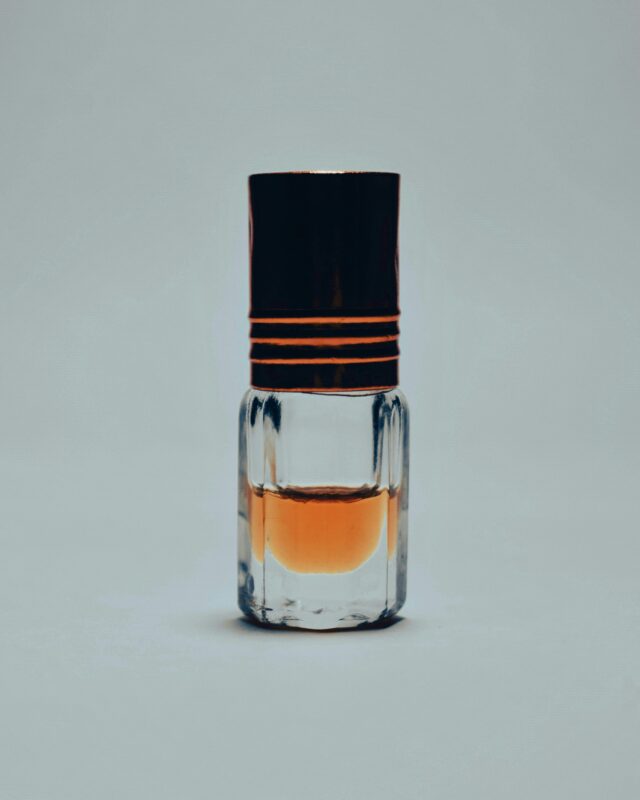
- Layering Scents: It’s common to blend attars or layer them with other fragrance types to create a custom scent. A popular approach is to start with a deep base attar (like a rich Oud or Sandalwood) and then top it with a lighter floral or citrus attar on another spot. For example, one could put a deep musk or oud attar on the neck, and a rose attar on the wrists. The notes mix on your skin.
- Rose-based oils are often recommended as “top notes” since rose plays well with many scents. Begin by letting your base attar dry down for a minute, then add the accent. This creates a unique layered fragrance that lasts longer. (Note: layering 2-3 oils is fine, but too many and the mix can get muddy. Start simple to see what you like.)
- Storage: Attars age like fine wine, meaning their scent can deepen over time. To preserve them, store bottles in a cool, dark place – away from sunlight, heat, and humidity. The classic advice is to keep attars in dark glass bottles with tight caps. Avoid plastic containers, as oils can react with plastic.
- A cupboard or drawer works; some enthusiasts even refrigerate attars if they live in a very hot climate. Always close the lid promptly after use to limit air exposure (oxygen can slowly alter the fragrance). Done right, pure attars don’t expire – many become smoother and more harmonious after months of aging.
- On-the-Go Use: Many modern attars come in roll-on bottles or with little glass dips. If you prefer, you can transfer a tiny amount into a travel roll-on for convenience. Because attar is oil, it won’t evaporate or irritate your skin like an alcohol spray might. So it’s great to carry with you – a discreet dab can refresh your scent mid-day. Also, you can apply attar to clothing if you like (a pulse of rose attar in a scarf, for example), but note that darker oils might stain fabric. Usually it’s safest to apply on skin.
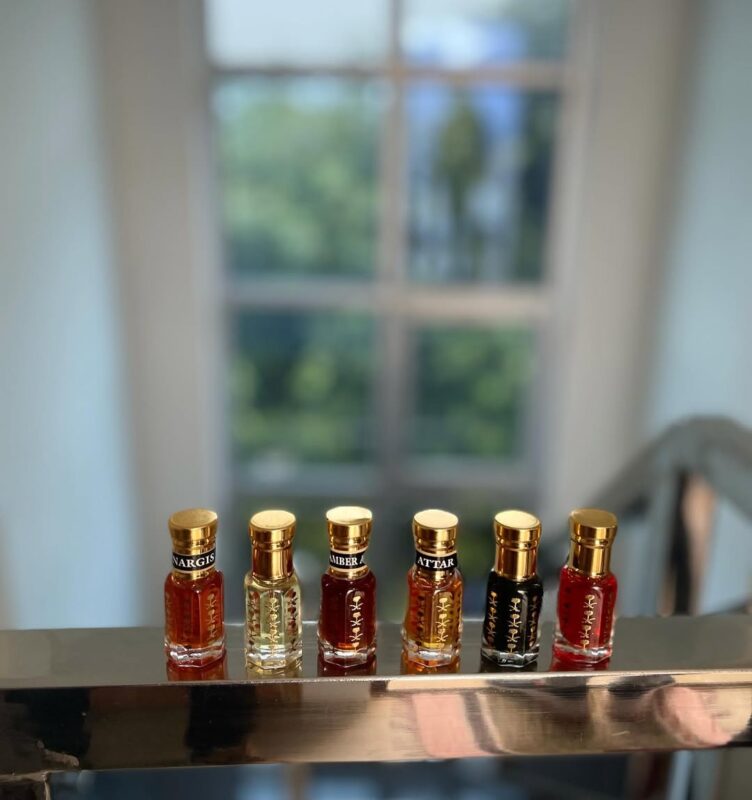
- Safety Note: Though attars are gentle, always test a small patch if you have super sensitive skin (especially if it’s your first time). The oil base generally reduces reactions (no burning alcohol!), but some pure oils can still irritate if over-applied. I found that avoiding broken or sensitive areas and using sparingly means my skin enjoys attar without issue.
With these tips, you’ll be able to incorporate attars into your fragrance routine seamlessly. Personally, I now keep a roll-on of sandalwood-vanilla attar in my desk drawer – it’s a subtle, uplifting scent when I need a pick-me-up.
Benefits of Using Attar
You might wonder: beyond the scent, what’s special about attars? Here are some benefits I discovered:
- 100% Natural: Attars come from plants (flowers, spices, woods) and the only “processing” is distillation. That means no synthetic chemicals or alcohols are added. For anyone seeking a clean or “green” fragrance, attars are about as natural as it gets. This also makes them suitable for eco-conscious users: pure attars are biodegradable, and no harmful chemical by-products are used.
- Alcohol-Free & Skin-Friendly: By definition, attars contain zero alcohol. This makes them very gentle on skin – much more so than many mass-market perfumes with high alcohol content. In fact, attars are often recommended for sensitive skin or for people who can’t use alcohol-based scents.
- If you’ve ever felt your skin tingle after a spray perfume, you’ll appreciate that attar is just pure oil. Understanding what is attar helps you see why it’s such a great choice: it won’t dry out your skin, and it rarely triggers headaches or rashes the way cheap perfumes can.

- Long-Lasting Fragrance: One of the biggest selling points: attars last incredibly long. Because they’re so concentrated, a tiny dab can linger on skin (and clothes) all day or even into the next day. (Contrast that with a typical EDT spray which might fade after a few hours.) I’ve personally found that a good attar will go through its scent stages but remain perceptible for 12-24 hours, whereas a perfume spray would be gone much sooner. Layering at the start of the day often means I smell just as fresh by evening.

- Therapeutic & Spiritual Qualities: Many attars aren’t just pretty-smelling; they’re tied to well-being rituals. Certain attars (sandalwood, rose, jasmine, saffron) are used in aromatherapy for relaxation, anxiety relief, or meditation. For instance, I’ve noticed a moment of calm just inhaling a bit of sandalwood attar during stressful days. Culturally, using attar can mark a special intent – a kind of perfume ritual. Sandalwood and rose attars are prized in Hindu ceremonies, and oud/saffron attars are used in Middle Eastern spirituality. The pure, earthy aroma seems to lift the mood.
- No Expiry and Layering Depth: Since there are no preservatives, attars don’t expire like commercial perfumes. In fact, they age – many attar enthusiasts treasure older oils. Over time, the sharp edges of a scent mellow and blend. It’s a bit like aging fine wine. The biggest benefit here is you can build a small attar collection and let them evolve. As they mellow, the base notes (like oud or musk) often grow richer and intermingle with the florals, giving more complexity. I’ve kept a sandalwood attar for a year and was amazed how much smoother it smelled compared to when I first opened it.
Overall, using attar feels luxurious and soulful. It’s more than a “finish spray” – it’s a little wellness ritual each morning. And knowing it’s natural and lasts so long makes me value each drop.
Attar vs Synthetic Perfumes
Attars and modern perfumes both aim to make you smell good, but they differ greatly. Here are the key contrasts:
- Ingredients: Attar is pure botanical oil (no alcohol, no synthetic molecules). Synthetic perfumes are mixtures – typically a small percentage of fragrant molecules (natural or artificial) plus up to 90% alcohol or solvents. For example, colognes might be only 5-15% scent oil, the rest alcohol/water. In other words, attar is 100% perfume essence, whereas a perfume spray is mostly carrier.
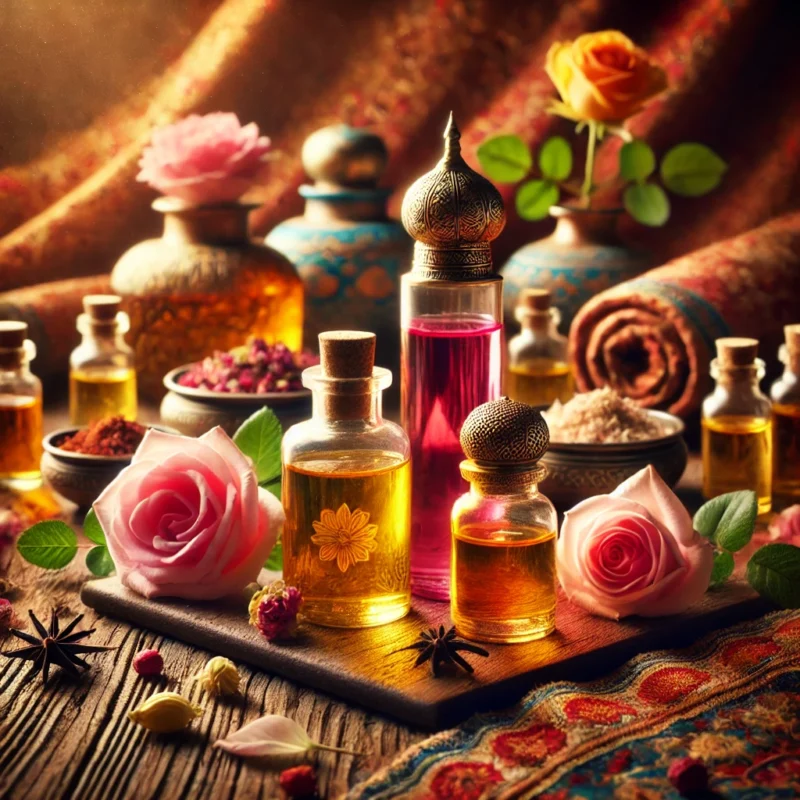
- Concentration & Longevity: Because attar is undiluted, it is super-concentrated. You need only a drop or two, and it lasts all day on your skin. Perfumes vary: eau de parfum (EDP) maybe lasts 5-8 hours, but an eau de toilette (EDT) or body spray might last just 2-3 hours. Generally, attars will beat any spray in sheer staying power.
- Skin-Friendliness: Attar’s oil formula tends to be kinder to sensitive skin. It doesn’t burn or dry out skin the way an alcohol spray might. Many people with fragrance allergies prefer attar for this reason. On the flip side, synthetic perfumes often include stabilizers, alcohol, and potentially allergenic synthetics, which can irritate or trigger headaches in some users.
- Depth and Complexity: Many attars develop complex layers as they settle, thanks to natural harmonies within pure oils. Perfumes are also complex, but their synthetic notes can sometimes smell sharper or linear. Attars often have an “old world” depth – for example, a sandalwood attar doesn’t just smell woody, it has earthy, spicy undertones that evolve. You might find attars richer and more “alive” in a certain way.
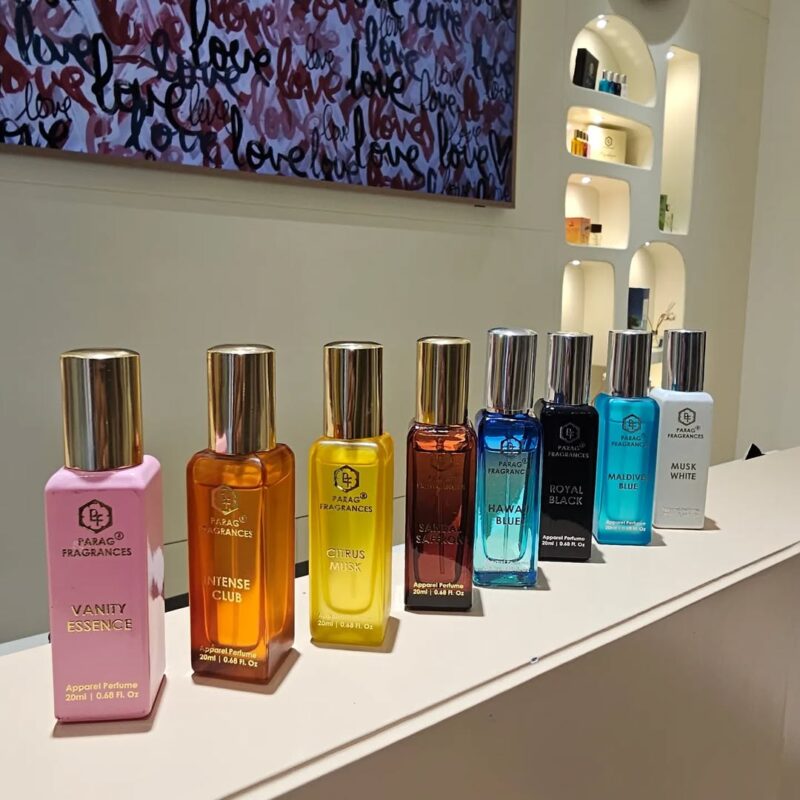
- Purpose & Experience: Attars often carry cultural or spiritual value, as mentioned earlier. Perfumes are marketed mostly as fashion or luxury products. Some fragrance lovers actually use attar as the base oil and then layer a perfume spray on top to make it last longer (a technique I’ve tried with rose attar under a rose parfum spray). But many treat attars as a stand-alone, statement scent.
All in all, attar vs perfume is a bit like comparing a hand-crafted artisanal meal to fast food. Both fill the need of smelling great, but attars pride themselves on authenticity and tradition.
Conclusion
Attar is, in my experience, one of those delightful “hidden gems” of the fragrance world. It took a bit of digging to understand everything behind that little oil drop, but I’m so glad I did. If you’ve ever wondered what is attar, it’s nature’s perfume oil – deeply concentrated, alcohol-free, and steeped in history. They smell amazing, they last ages on your skin, and they carry an almost mystical charm. Attars connect you to ancient traditions — Persian courts, Mughal palaces, Indian temples, Middle Eastern souks — with every scent note.
For anyone curious about going green with their fragrance or simply looking for a unique signature scent, I’d say give attars a try. Start with something simple like a rose or sandalwood attar and see how it feels. (Don’t be intimidated by “attar shopping” – many sellers offer small sizes.) You might find that a little bottle of attar becomes your secret indulgence, tucked in your drawer like liquid aromatherapy.
Whether you’re an attar newbie or just attar-curious, enjoy the journey. Personally, every time I smell sandalwood or ambergris attar now, I’m reminded of that Delhi market visit and how a humble dab of oil can carry a whole world of scent and story. Understanding what is attar has added so much depth to my fragrance experience—it’s more than just a scent; it’s a sensory connection to culture, history, and nature.
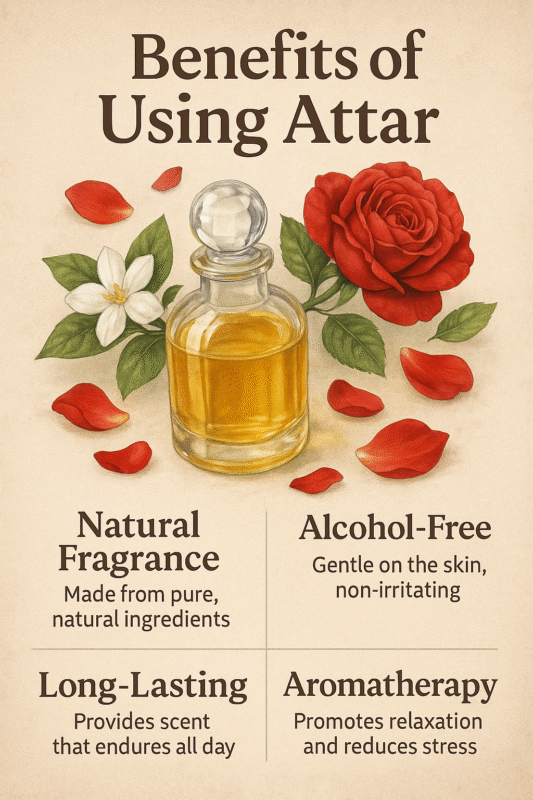
FAQs
1. What exactly is attar and how is it made?
What is Attar? Attar, also known as ittar, is a concentrated perfume oil that stands apart for its 100% natural composition. It’s crafted through the distillation of aromatic botanical sources like flowers (think exquisite rose or intoxicating jasmine), fragrant herbs, rich woods, or warm spices. The traditional method often involves hydro or steam distillation of the floral or plant material, and the fragrant vapor is then carefully condensed into a base oil, with sandalwood being a classic choice. This process yields a pure and highly concentrated fragrance oil.
This natural extraction and oil-based composition distinguish attar from conventional alcohol-based perfumes. While alcohol-based perfumes are typically a mixture of various scent compounds dissolved in an alcohol base and presented as a spray, attar offers a more direct and potent aromatic experience derived solely from nature’s bounty.
2. How do I apply attar?
Very carefully – a little goes a long way! Dab one or two tiny drops of attar on warm pulse points (wrists, behind ears, base of the neck). Don’t rub it in; just let it dry on its own. Because attar is oil, it will cling to your skin and gradually release scent. You can also layer attars (e.g., a strong base note attar first, then a lighter floral on top) for a custom blend.
3. Why do people say attar is better for sensitive skin?
Attar is alcohol-free and natural, so it usually won’t dry out or irritate skin like some perfumes can. Many fragrance allergies are reactions to synthetic chemicals or high alcohol content in sprays. With attar, you’re basically applying plant oils, which are gentler. Of course, it’s always wise to test a small patch first, but attars are widely considered skin-friendly.
4. How long does attar last on my skin compared to normal perfume?
Attars are famous for their longevity. Because they’re so concentrated, even a tiny dab can last all day (12+ hours). Perfumes usually evaporate faster – an eau de parfum might last 5-8 hours, an eau de toilette only a few. People often say one drop of attar outlasts a spray of perfume by far. If stored properly (in a cool, dark place) pure attars can even become stronger with age.
5. Which attar scents and brands should I try?
If you’re new, classic notes like rose attar, sandalwood (chandan) attar, or jasmine attar are lovely starters. For brands, Indian houses like Parag Fragrances or Indra Sugandh (for affordable classics) and newer brands like Kastoor or Ambrosial (for modern blends) come highly recommended. For Middle Eastern-style attars, Ajmal, Rasasi, or Oud Arabia have beautiful oud and amber blends. When buying, look for purity (no alcohol listed) and read reviews if you can. A small investment in a good attar will usually give you a uniquely rewarding scent experience.
References:
- Britannica, Attar | natural perfume oil
- Parag Fragrances, Welcome to Parag Fragrances
- Kastoor, Kastoor – The Fragrance of India
- Ambrosial Fragrances, Ambrosial – Pure Indian Attars
- Ajmal Perfumes, Ajmal Perfume Official Website
- Oud Arabia, Oud Arabia – Premium Fragrances
- Adil Qadri, Adil Qadri Perfumes – Official Store
- Times of India, Kannauj: Everything you should know about the Perfume Capital of India
- Fragrantica, Perfume Notes Guide
- Healthline, What Are Essential Oils, and Do They Work?
- Vogue India, This Indian brand is reviving a 60,000-year-old perfumery practice
- National Geographic, Scents and Sensibility: Ancient Perfume History
- The Guardian, Oudh: The World’s Most Expensive Fragrance
- YouTube, Kannauj Attar Making Documentary
Siman Ray is a seasoned journalist with years of experience in the news media industry. Now serving as the Editor at Perfume Passion, he brings his investigative eye and passion for storytelling to the world of fragrances. A dedicated perfume enthusiast, Siman has conducted in-depth research on Indian perfumes, attars, and the rich history of perfumery. His writing blends expertise with curiosity, making complex scent stories accessible and engaging for all fragrance lovers.


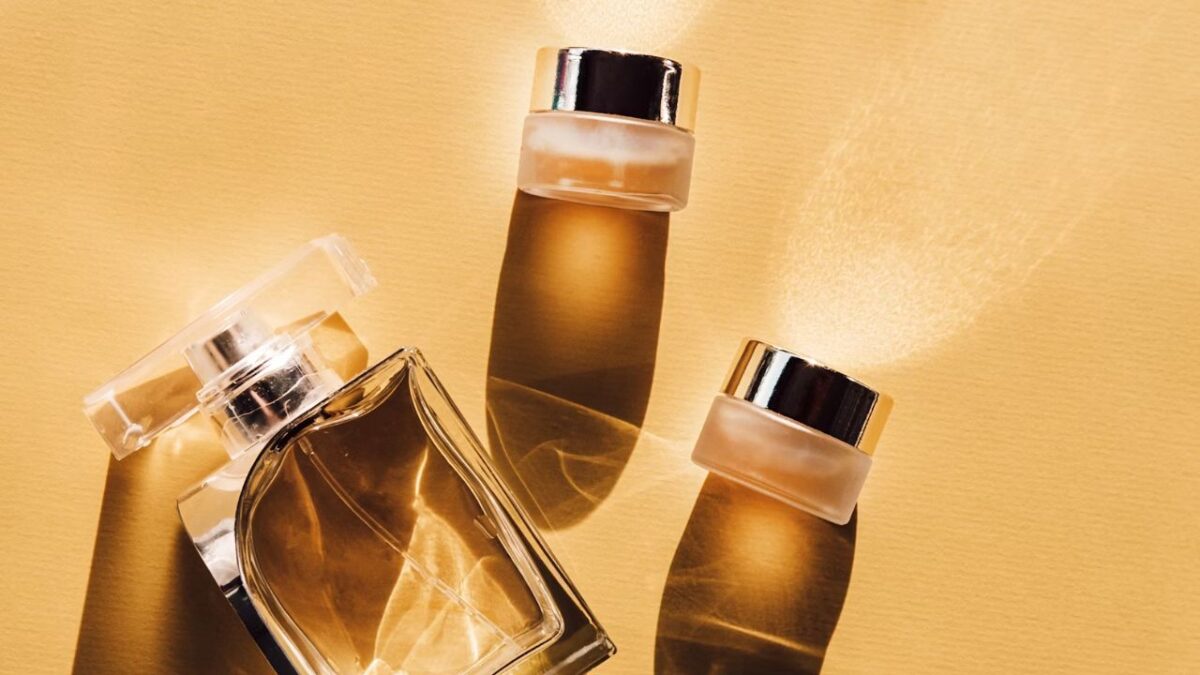

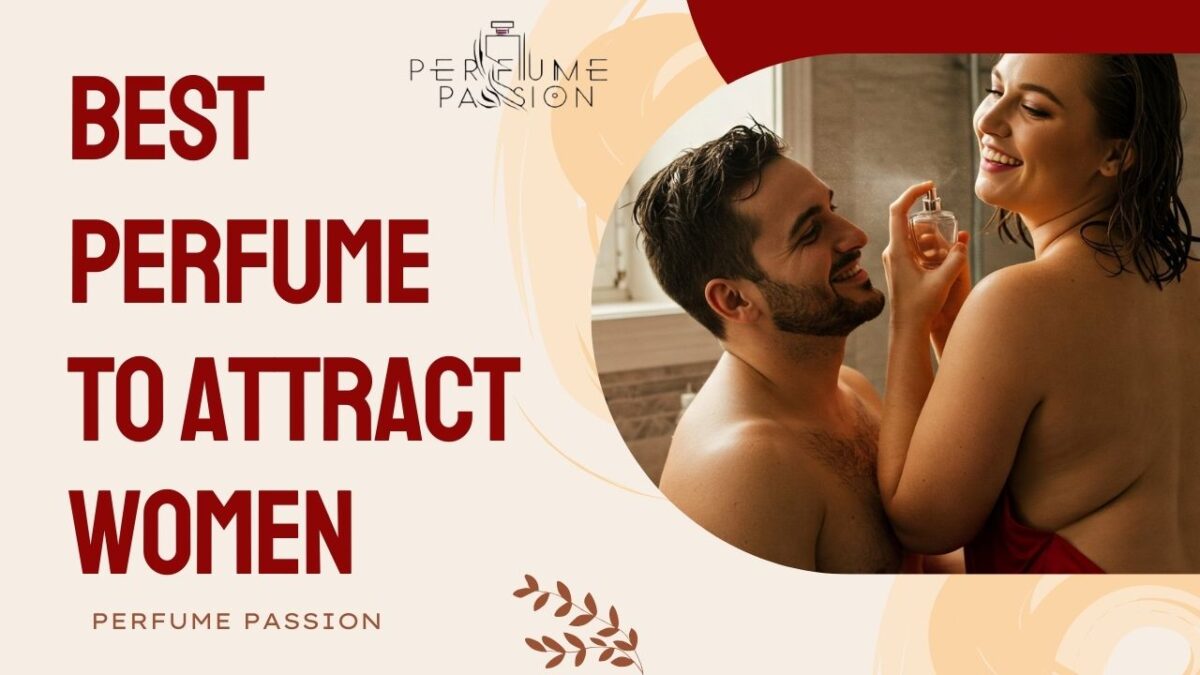

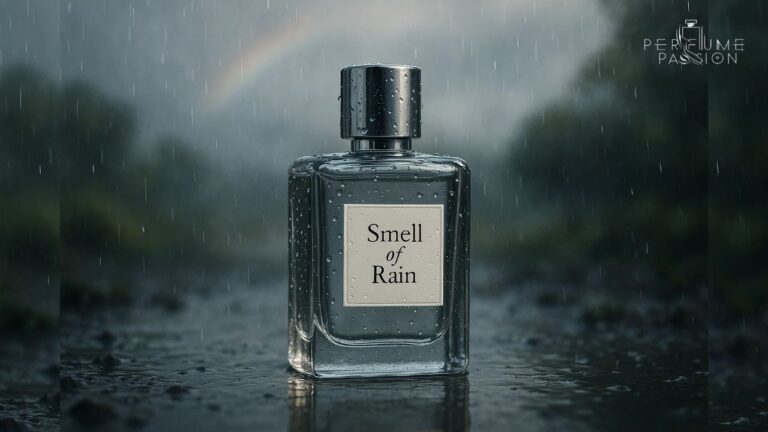



Pingback: Body Spray vs. Perfume: Which Offers the Greatest Value? -